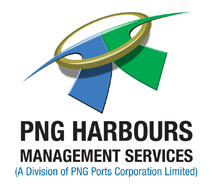PNG Ports Corporation Ltd was appointed by the Department of Transport through an Instrument of delegation to manage the ports within the country with specific to the sections of the Act highlighting the responsibilities below
Powers of the Port Manager
a) subject to any right of tenancy or occupation grant by or under any law, to control the use of the foreshores in a declared port; and
b) to enter into contracts and agreements for or in respect of the performance of any of his functions or the exercise of any of his powers; and
c) to require a person to remove or destroy, or to cause to be removed or destroyed, any object or thing that in his opinion in an obstruction, hindrance or danger to navigation in, or to the use of, a declared port by any vessel; and
d) where, under Paragraph (c), the Departmental Head removes or destroys, or causes to be removed or destroyed, any object of thing, to recover from the owner of it, or from the person responsible for the placing or abandoning of it, the cost of the removal or destruction; and
e) to appoint agents; and
f) to do such other things as are required or permitted under the Act to be done by him.
Delegated Responsibilities of the Port Manager outside of the Declared Port
a) the determination of the location of markers, buoys, beacons and leads for the use of shipping approaching a declared port or in bays, rivers and estuaries used by shipping; and
b) in bays, rivers and estuaries used by shipping –
(i) the dredging and deepening of channels; and
(ii) the determination of the location of berthing and mooring places with or without wharves or jetties ; and
the investigations, rivers and estuaries with a view to ascertaining their suitability for use as ports or by shipping
Delegated Responsibilities of the Port Manager within a Declared Port
a) to control and regulate all waters and the use of all waters within the limit,
b) to erect and place in position buoys, markers, beacons and leads, and other things, that are necessary or desirable to facilitate navigation in or into a declared port,
c) to dredge and maintain channels and berthing places,
d) to build retaining walls for the purpose of reclaiming, and to reclaim and obtain title to, land that is the bed of a declared port,
e) to control, direct and regulate the employment of waterside workers (whether or not employment by the Department responsible for transport matters),
f) to do all such other acts as will facilitate the use of a declared port by shipping,
g) to establish effective co-operation between the Department responsible for transport matters, any licensee or licensees and Port Advisory Committees and to co-ordinate the work of those Committees.
Powers of Authorized Officers
The following are the powers of the Authorized officers appointed by the Port Manager highlighted in Section 79of the Regulations are;
a. the power to require any person in a port to provide the person’s name and address and to produce such evidence as to the person’s identity, as may be reasonably required;
b. subject to any other law and with the consent of customs where necessary or appropriate to:
(i) Enter and inspect any part of the Port or facility, a vessel in a Port and any vehicle in a Port;
(ii) Take measurement and make test as required by their duties:
(iii) Inspect and take copies of documents; and
(iv) Take photographs and remove specimens of samples of any substance, material or things as is reasonable in the circumstances.


